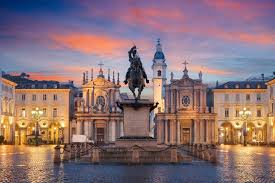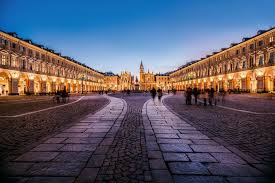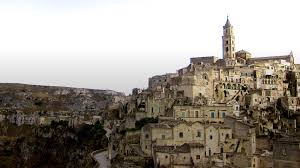Why you should visit Italy’s secret city

Larry Olmsted
Milan: “Move over Milan, A Guide To Turin, Italy’s Most Elegant City,” was a Vogue headline less than two years ago, with the fashion magazine explaining that “Turin—Italy’s fourth largest city, located just 45-minutes from Milan by train—has somehow remained blithely under wraps.” Less than a year ago, London’s Telegraph explained “Why Turin is Italy’s most underrated destination for a cultural getaway.” Around the same time EuroNews wrote “Italy has no shortage of famous cities—but none as underrated as Turin,” in a feature aptly titled “Europe’s Best under-the-radar cities.” And just a few months back the New York Times singled Turin out for its often misguided but very popular 36 Hours travel feature.

But 36 hours in Turin would be a wasted trip—a traveler seeking a real experience should budget at least four full days.
I’d been to Turin before and had been impressed, but this year I returned for a longer, more in-depth visit and was really blown away. I love Italy, but while Rome, Milan, Florence and Naples all have great appeals, they also have various negatives—none of which you will find in Turin. The traffic is not bad, it’s extremely walkable, it feels very safe, there is a ton of greenspace, it’s cheap, and while it is making its way onto many new “hot lists” of travel, it is still so under-touristed that just about every bar and restaurant relies on locals and it is hard to get a bad meal, something that has become painfully easy to do in crowded parts of the much more visited cities. There were no touts outside restaurants with menus in 10 languages trying to steer us inside. While Turin does not get as much press as its siblings, just about every article that does get written uses adjectives like local and authentic. Or as the Guardian put it in a recent story on why “The Italian city is a must-see,” “This is a place that embraces the many facets of its history without trying to Disneyfy them.”
The large heart of downtown, from the train station to the river, including the largest piazzas and most of the key attractions, is heavily pedestrianized, with many streets closed to traffic and a vibrant street scene. This includes tons of outdoor dining and on weekends antique and farmers markets in piazzas and artisan stalls in the streets. The main open-air weekend produce and retail market is the country’s largest.

Italy has a wonderful tradition known as the “passeggiata,” an evening stroll outside, a social time for mingling in the street, but when the sun is out, all of Turin becomes a full-day passeggiata. It’s the most energized street scene I’ve seen in Italy, and I’ve been more than 20-times all over the country. People just seem to really love it here, and the bottom line is that while there are many cities in Italy that are great to visit, Turin has the unique feel of one where it would actually be great to live, and bargain basement prices to match for everything from food to wine to rent. As I write this, one of the very best hotels in Turin, the NH Piazza Carlina, is $202 tonight. The top hotels in Venice all almost all over $2,000—entry level rooms. Rome is more like $1,500. Yes, those hotels are fancier, but still.
Speaking of wine, Turin is the big city of Piemonte, Italy’s most acclaimed wine producing region, and it is surrounded by world-class vineyards and the famous towns of Asti and Alba. Piemonte is home to Italy’s great collectible big reds, Barolo, Barbaresco and Barbera, along with lighter Dolcetto. Barolo is the star, and it’s hard to be humble when your nickname is “The King of Wine.” The most famous white is Moscato d’Asti, but there are some local unsung but absolutely delicious whites—do not miss Arneis. Arneis is to wine what Turin is to European cities—delicious, affordable and very overlooked.

Turin has great museums, architecture, history, food and grandeur, yet while it is more than twice the size of Florence—bigger than Florence and Bologna combined—it still comes up short when Americans discuss travel to Italy.
Frankly, Turin will probably remain better off as a hidden gem considering the recent ravages of over-tourism, but you’d be remiss to consider a leisure trip to Italy and skip it.
-Turin is the cradle of Italian chocolate, especially the hazelnut and chocolate gianduja, which was invented here. It is the corporate home of Nutella, the world’s favorite chocolate hazelnut spread. Great place to have a sweet tooth.
-Turin is the birthplace of Italian coffee culture, and home to Lavazza, the first brand that blended different beans to create a sum of its parts greater than the individual components. The first espresso machine also hails from here, and you can see a model in the new, beautiful architect driven Lavazza museum—and on the lucky days, smell the coffee roasting nearby.
-As a byproduct of the rich chocolate and coffee histories, Turin is chock full of grand cafes with swank marble bars and floor to ceiling mirrors, the kind of places you’d expect to find in Vienna. There are classic examples all over town, and on every major piazza—which includes the largest one in Italy. Turin even has its own signature “must try” beverage, bicerin, a layered mix—do not stir!—of coffee, thick hot chocolate and dense cream (or vanilla gelato). Try it, you’ll like it!
-Turin is also the birthplace of Vermouth, and top brand Martini Rossi is based here. Their attraction, Casa Martini, is another must-visit, with a variety of “educational” tastings offered. There is a 1-hour Vermouth class, 1-hour cocktail class, 2-hour factory tour and tasting, and 90-minute Ultimate Martini Experience with a broad tasting of their product range (more than just vermouth). In the many grand cafes, you will find a wide range of boutique, small producer and craft vermouth to sample.
-As a byproduct of the great cafes and the vermouth, Turin is Italy’s capital of “aperitivo,” a local tradition that exists every evening from roughly 4-7 or somewhere in between, where bars are expected to offer tapas-style small plates of food along with drinks, which are often at reduced prices. Think of it as the world’s most elegant city-wide Happy Hour. Some places put out extensive self-serve buffets, some bring trays laden with a mix of small plates, some just go simple and hand out some nuts and olives. It’s usually free, but some offer reduced price sharing plates, like charcuterie boards for sale during apertivo, still a great deal. In any case, it’s a great tradition that is easy to adopt into your daily routine, done to this degree no place else in Italy. If you have the capacity for a few cocktails or glasses of wine, you might just turn aperitvo into a substitute for dinner.
-I mentioned wine, which is widely available by the glass at prices so low that they constantly shock Americans, especially when you skip the exorbitant taxes and gratuities we live with. But Turin is a real foodie city, and in addition to the chocolates and coffee and cafes, it is home to the original Eataly, a forward-thinking combination gourmet store, bookstore and restaurant that contrary to American myth was never founded by Mario Batali or anyone in our country, they licensed the idea. The original location is worth a visit, and a great place to eat out in Lingotto on the edge of the city, and there’s a smaller satellite downtown.
-The biggest attraction in the city is the famed Egyptian Museum, the largest collection of its kind outside Egypt, in a wonderfully renovated building with a great one-way flow layout. It’s best to buy tickets online in advance because they limit the number of people at any time and it often sells out, especially on weekends. This is the one can’t miss here, though both the Lavazza and Martini Rossie factory museums are excellent.
-Fiat is also a Turin local, but its museum has closed indefinitely. However, Turin is home to Italy’s National Auto Museum, The Museo Nazionale dell’Automobile di Torino, which is probably even more interesting for car fans (I did not get there).
-Turin is also home to the acclaimed National Museum of Cinema, and Italy has a long, rich and robust film making tradition.
-The Reggia of Venaria Reale is often called the “Versailles of Italy,” and like the Parisian one, is a former royal hunting estate outside the city. A summer residence of the Savoy family, it features a grand palace full of art, extensive French gardens with modern art sculptures throughout, and Europe’s biggest fenced public park, spanning more than 12,000-acres. Another top tier Turin attraction, it sits just six miles outside the city.
-Turin is known as a city of parks, generally considered the best urban collection in Italy. The one out at the Reggia of Venaria Reale is the most elegant for picnics, but you do not have to leave the city to partake. The Parco del Valentino runs for miles along the River Po, which bisects Turin, and is full of traffic-free bike and walking paths, extremely popular for exercise, and it even contains a faux Medieval village and lots of statues, sculptures and elaborate fountains. The Parco Carrara, known locally by its nickname Pellerina, is the largest city park in Italy, more about open protected space.
-Ironically, the city’s most famous attraction is the hardest to see, as the Shroud of Turin, one of the most, if not the most important icons of Catholicism, is only displayed for short periods of time every few years at the order of the Pope. When this happens, Turin ceases to be an under-the-radar destination and becomes a global pilgrimage spot to view the Shroud. But it is Italy, so there is always a wealth of important and historic churches and basilica to tour here.
It’s very easy to arrive by train from Milan or Florence, with non-stops from the U.S. to Milan and a very accessible train station in the city’s larger Malpensa airport. But Turin has a small international airport with connecting flights from other European cities on carriers such as Lufthansa.
This is a city you want to tour, as in with a guide, and if you look online, you will find a slew of food tours, especially around chocolate, and other city tours, but not all are created equally.
Getting a guide is easy, but getting a good (or the best) guide is much harder, so I chose Imago Artis, a luxury Italy-based destination management company, meaning they handle all aspects of travel to Italy, aimed at American audiences. If you have a high-end travel agent, they call Imago Artis, but you can also do this directly. To tour the Reggia of Venaria Reale and other historic local sites, they got us a licensed guide who was also an architect, which added a lot to our experience. When it comes to maximizing your time and getting the most out of attractions, this kind of attention to detail matters. They can also do every part of your trip, from helping you choose luxury lodging to recommending the best restaurants for dinner to arranging winery visits. More famous visitors to Italy than myself who have used Imago Artis range from Martin Scorsese to Jeff Bezos, and Michael Jordan to Sylvester Stallone.
For its size and elegance, Turin has surprisingly few luxury hotels, and none of the 5-Star brands like St. Regis or Four Seasons found in other large Italian cities. But it has a group of standout properties from NH Hotels, a fast-growing European brand that I have had great experience with (NH is owned by Bangkok-based luxury brand Anantara, whose recent hotel in Rome is one of the great additions to that city’s lodging base.
The first time I visited Turin I stayed at the NH Torino Lingotto Congress hotel, an architectural gem fashioned out of the decommissioned Fiat Factory on the outskirts of town. It’s next to the city’s conference center, and very close to both the original Eataly and the National Auto Museum. A design focused property, it has a cool vibe, with a tropical garden in the center of the hotel and a rooftop jogging track converted from the former Fiat-test track, the setting for a famous scene from the movie The Italian Job.
I loved it, but it’s a little bit removed from the action, so this time I stayed at the NH Collection Torino Piazza Carlina, the standout of the group, on a beautiful Piazza (Carlina, of course) that has several good indoor/outdoor bars and restaurants for aperitivo but is quieter than the bigger piazzas. It’s a great location, peace, quiet and elegance but five minutes’ walk to the heart of the city center, the Egyptian museum, the grand cafes and the big piazzas. There’s a well-equipped modern gym on the top floor with great views, and a large central open-air courtyard where you can enjoy breakfasts (included) and aperitivo hours. Rooms are large with modern luxury bathrooms. But the highlight was the excellent restaurant, one of the best fine dining spots in the city, with a huge Piedmontese wine list and a substantial Vermouth program. There are a handful of very traditional Piedmontese dishes that tend to show up on every upscale menu in town, and what I loved here was that they had more elegant, modern interpretations of the sometimes heavy, rustic dishes with more flavor and flair. The Ristorante Carlina is not to be missed, no matter where you stay, but I’d stay right here.
The other two properties include the very well-located 4-Star (Italian government ranking) NH Collection Torino Santo Stefano, in the fashionable Quadrilatero Romano district, full of shopping, restaurants and nightlife. It sits next to the San Giovanni Cathedral, home to the Shroud of Turin, and is very convenient to the major downtown attractions. The restaurant “La Pista Bistrot” features a menu by Michelin-starred chef Fabrizio Tesse and serves traditional Piedmontese cuisine alongside a choice of local wines, with an inner outdoor courtyard. The NH Torino Centro lacks a fine dining restaurant but is the most reasonably priced and located near the main train station, also within walking distance of all the major attractions.





